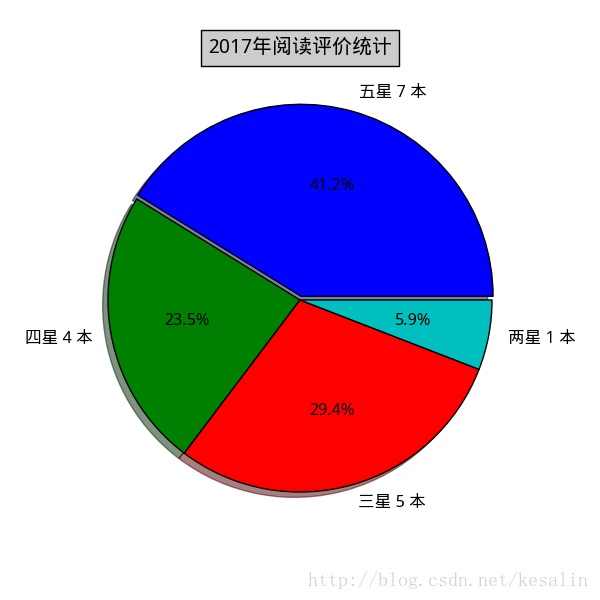Python实现一个带权无回置随机抽选函数的方法
需求
有一个抽奖应用,从所有参与的用户抽出K位中奖用户(K=奖品数量),且要根据每位用户拥有的抽奖码数量作为权重。
如假设有三个用户及他们的权重是: A(1), B(1), C(2)。希望抽到A的概率为25%,抽到B的概率为25%, 抽到C的概率为50%。
分析
比较直观的做法是把两个C放到列表中抽选,如[A, B, C, C], 使用Python内置的函数random.choice[A, B, C, C], 这样C抽到的概率即为50%。
这个办法的问题是权重比较大的时候,浪费内存空间。
更一般的方法是,将所有权重加和4,然后从[0, 4)区间里随机挑选一个值,将A, B, C占用不同大小的区间。[0,1)是A, [1,2)是B, [2,4)是C。
使用Python的函数random.ranint(0, 3)或者int(random.random()*4)均可产生0-3的随机整数R。判断R在哪个区间即选择哪个用户。
接下来是寻找随机数在哪个区间的方法,
一种方法是按顺序遍历列表并保存已遍历的元素权重综合S,一旦S大于R,就返回当前元素。
from operator import itemgetter
users = [('A', 1), ('B', 1), ('C', 2)]
total = sum(map(itemgetter(1), users))
rnd = int(random.random()*total) # 0~3
s = 0
for u, w in users:
s += w
if s > rnd:
return u
不过这种方法的复杂度是O(N), 因为要遍历所有的users。
可以想到另外一种方法,先按顺序把累积加的权重排成列表,然后对它使用二分法搜索,二分法复杂度降到O(logN)(除去其他的处理)
users = [('A', 1), ('B', 1), ('C', 2)]
cum_weights = list(itertools.accumulate(map(itemgetter(1), users))) # [1, 2, 4]
total = cum_weights[-1]
rnd = int(random.random()*total) # 0~3
hi = len(cum_weights) - 1
index = bisect.bisect(cum_weights, rnd, 0, hi)
return users(index)[0]
Python内置库random的choices函数(3.6版本后有)即是如此实现,random.choices函数签名为 random.choices(population, weights=None, *, cum_weights=None, k=1) population是待选列表, weights是各自的权重,cum_weights是可选的计算好的累加权重(两者选一),k是抽选数量(有回置抽选)。 源码如下:
def choices(self, population, weights=None, *, cum_weights=None, k=1):
"""Return a k sized list of population elements chosen with replacement.
If the relative weights or cumulative weights are not specified,
the selections are made with equal probability.
"""
random = self.random
if cum_weights is None:
if weights is None:
_int = int
total = len(population)
return [population[_int(random() * total)] for i in range(k)]
cum_weights = list(_itertools.accumulate(weights))
elif weights is not None:
raise TypeError('Cannot specify both weights and cumulative weights')
if len(cum_weights) != len(population):
raise ValueError('The number of weights does not match the population')
bisect = _bisect.bisect
total = cum_weights[-1]
hi = len(cum_weights) - 1
return [population[bisect(cum_weights, random() * total, 0, hi)]
for i in range(k)]
更进一步
因为Python内置的random.choices是有回置抽选,无回置抽选函数是random.sample,但该函数不能根据权重抽选(random.sample(population, k))。
原生的random.sample可以抽选个多个元素但不影响原有的列表,其使用了两种算法实现, 保证了各种情况均有良好的性能。 (源码地址:random.sample)
第一种是部分shuffle,得到K个元素就返回。 时间复杂度是O(N),不过需要复制原有的序列,增加内存使用。
result = [None] * k n = len(population) pool = list(population) # 不改变原有的序列 for i in range(k): j = int(random.random()*(n-i)) result[k] = pool[j] pool[j] = pool[n-i-1] # 已选中的元素移走,后面未选中元素填上 return result
而第二种是设置一个已选择的set,多次随机抽选,如果抽中的元素在set内,就重新再抽,无需复制新的序列。 当k相对n较小时,random.sample使用该算法,重复选择元素的概率较小。
selected = set()
selected_add = selected.add # 加速方法访问
for i in range(k):
j = int(random.random()*n)
while j in selected:
j = int(random.random()*n)
selected_add(j)
result[j] = population[j]
return result
抽奖应用需要的是带权无回置抽选算法,结合random.choices和random.sample的实现写一个函数weighted_sample。
一般抽奖的人数都比奖品数量大得多,可选用random.sample的第二种方法作为无回置抽选,当然可以继续优化。
代码如下:
def weighted_sample(population, weights, k=1):
"""Like random.sample, but add weights.
"""
n = len(population)
if n == 0:
return []
if not 0 <= k <= n:
raise ValueError("Sample larger than population or is negative")
if len(weights) != n:
raise ValueError('The number of weights does not match the population')
cum_weights = list(itertools.accumulate(weights))
total = cum_weights[-1]
if total <= 0: # 预防一些错误的权重
return random.sample(population, k=k)
hi = len(cum_weights) - 1
selected = set()
_bisect = bisect.bisect
_random = random.random
selected_add = selected.add
result = [None] * k
for i in range(k):
j = _bisect(cum_weights, _random()*total, 0, hi)
while j in selected:
j = _bisect(cum_weights, _random()*total, 0, hi)
selected_add(j)
result[i] = population[j]
return result
以上就是本文的全部内容,希望对大家的学习有所帮助,也希望大家多多支持【听图阁-专注于Python设计】。

